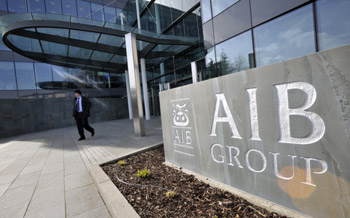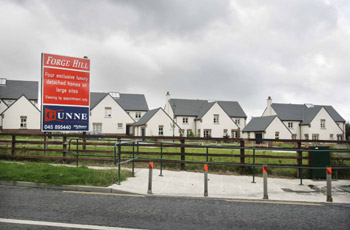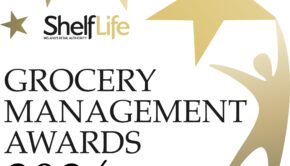Banks: nationalisation now the only option

With NAMA likely to crystallise further loan losses at Irish-owned banks, full-scale nationalisation is now the only option, writes Dan White
16 March 2010
In 2009 AIB lost €2.6bn before tax. The main contributor to these losses was a bad debt charge of €5.35bn. When combined with the €1.82bn which AIB wrote off in 2008 this means that AIB has now written off a total €7.17bn over the past two years, 5.5% of its original €130bn loan book.
And things are almost certainly going to get worse. When it finally approved NAMA at the end of last month the EU Commission made it crystal clear that it would be keeping a very close eye on the bad loans with a book value of €80bn which NAMA proposes to take off the balance sheets of the Irish banks.
This almost certainly means that the eventual discount NAMA receives on these loans will be considerably greater than the 30% which was envisaged by Finance Minister Brian Lenihan when he first announced his detailed plans for the state-backed “bad bank” last September.
Considerable write-downs
Just one example suffices to demonstrate the fact that a 30% write-down will almost certainly prove to be utterly inadequate. The Commercial Court recently heard evidence of a site in Athlone that had been valued at €31m in 2006. It is now worth just €600,000, a 98% write-down.
While the Athlone case may well prove to be an extreme example there is little doubt but that property prices have fallen by much more than 30% and that they will certainly fall even further before the market bottoms out.
With almost two-thirds of Irish bank lending, over €250bn, being tied up in bricks and mortar, understanding what is happening in the property market is the key to determining the likely course of events in the banking system. Unfortunately there is a dearth of timely and accurate information.
Last month mortgage bank Permanent TSB suspended the monthly publication of its house price index on the grounds that it was now issuing so few home loans that it was no longer possible for it to construct a meaningful sample. For what it was worth the Permanent TSB index was showing a 31% fall in house prices from their February 2007 peak by the end of December 2009.
Not alone was the lack of activity in the housing market making it impossible to construct a meaningful sample, most sales are now taking so long to complete that the index was reflecting the state of the housing market six or eight months previously. With even Construction Federation boss Tom Parlon now admitting that house prices have fallen by 50% it is clear that things are bad, very bad, in the housing market.
 Worse to come
Worse to come
And there is almost certainly worse to come. As far back as the April 2006 census there were 266,000 unoccupied houses and apartments in the country. Recent research by NUI Maynooth estimated that this figure was now over 300,000. That strikes me as being way too low.
We have built a further 230,000 new houses and apartments since then, many of which are either unsold or were sold to investors who can’t let them.
All of which is bad news for the Irish banks who have almost @150bn of residential mortgages on their books. With mortgage arrears already rising the ESRI estimates that somewhere between 25% and 40% of all mortgages will be in negative equity by the end of this year. It is clear that the banks are going to end up taking a major hit on their mortgage books.
Retail sales down by a fifth
We have built almost three million square metres of new shopping centre and retail park floor space since the late 1990s. With retail sales down by almost a fifth over the past two years and pressure for the abolition of upward-only rent reviews on existing leases mounting, the scene has been set for a massive reduction in retail rents and capital values.
Throw in record vacancy levels for office space and it’s clear that commercial property prices still have further to fall. Before the year is out other developers will have joined Liam Carroll, Paddy Kelly, John Fleming and Bernard McNamara on the scrapheap.
No matter how you choose to look at it the bad debt write-downs already announced by the banks, €7.2bn at AIB, €6.9bn at Bank of Ireland and €4bn, with much more to come, Anglo are merely the tip of the iceberg. While AIB and Bank of Ireland hope to raise some extra capital from private investors that’s almost certainly wishful thinking.
Last month the state acquired a near 16% stake in Bank of Ireland almost by accident when the EU prevented it paying the €280m annual dividend it owed on the €3.5bn of preference shares which the government purchased as part of last year’s bank recapitalisation programme in cash. Barring some major unforeseen turn of events, the same will happen next May when the dividend on the AIB preference shares falls due.
This will only be the beginning of the process, which will see both of the main Irish-owned banks fall into virtually complete State ownership well before the end of the year. With the cost of sorting out Anglo now being put at up to €11bn, and the property market showing no sign of bottoming out, the taxpayer is going to have to stump up much more than the €11bn of capital which has already been pumped into the Irish banks, at least €15bn more.
While a fraction of this amount can come from disposals, the reality is that the vast bulk of the fresh capital required by the banks is going to have to come from the State. This will expose the taxpayer to the indignity of not being able to borrow from the banks and paying dearly for the privilege!



 Print
Print






Fans 0
Followers